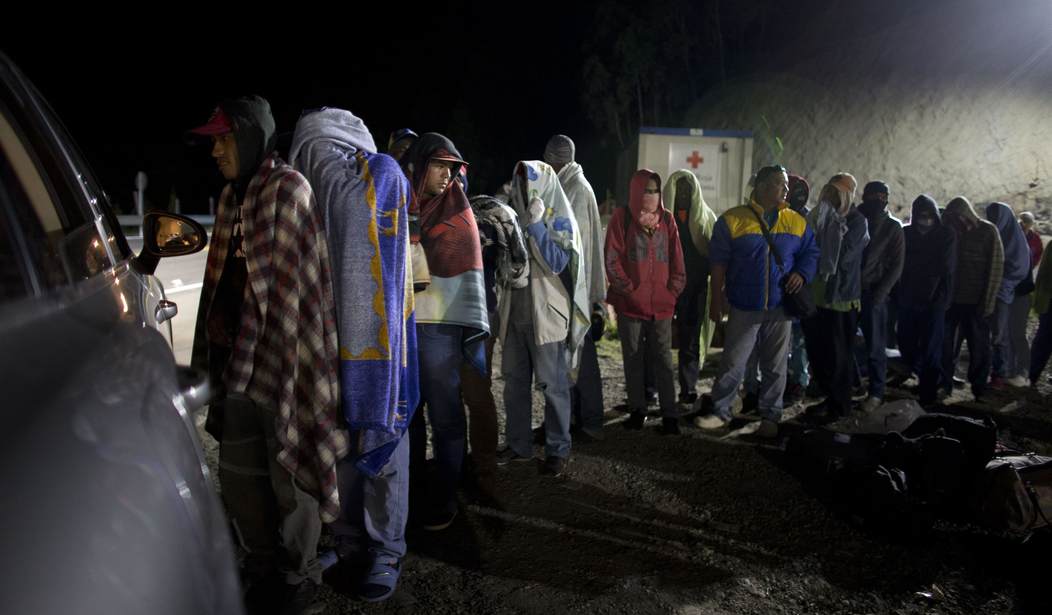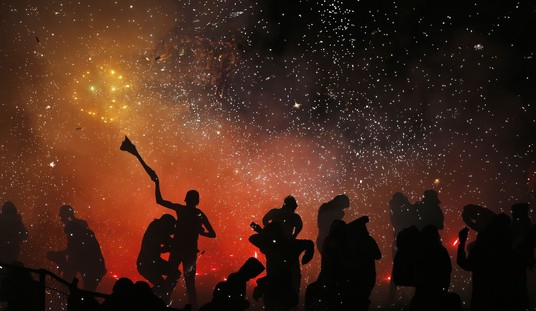The Center for Immigration Studies (CIS) held a panel discussion on December 7, 2021, to describe the ongoing humanitarian crisis at the Darien Gap. This region of Panama sees a massive train of international migrants crossing from Colombia, in South America, to Central America on their way to the southern border of the United States. Most Americans likely don’t understand the source of illegal immigrants and assume most of them to be of Mexican descent. But as many as 100,000 migrants have passed through the Darien Gap in 2021, many from state sponsors of global terror. A shocking number die along the way, and many more become victims of human trafficking. The United States doesn’t know who passes through this route on the way to our border—the border the Biden administration has refused to secure.
The Darien Gap has been described as the most dangerous jungle in the world, and is known as a chokepoint for migrants from all over the globe who are moving on foot to the north. One reporter says the area has the most vultures he’s ever seen in one place.
Vultures, of course, feed on carrion. In this case, human bodies.
The humanitarian crisis could be stopped immediately, one panelist said:
The Panamanian authorities will tell you they can’t close down the migration route, which is completely false because during the pandemic they shut it off. It was finished, right? I mean, there was not even a drop coming through during the pandemic. Panama locked down like North Korea for the pandemic, right? So we know that they can shut it off, period.
The panel consisted of global war correspondent Michael Yon, Mayor Francisco Agape of the Panamanian city Cémaco, which is near Darien Gap, and U.S. Rep. Tom Tiffany (R-Wis.), possibly the only member of Congress who has visited Darien Gap.
Yon says he spent a large portion of 2021 in Panama, Colombia, and Mexico, as well as some European countries facing similar migrant crises. He described the dangers faced by migrants trying to cross the Darien Gap on foot — many without shoes:
We think about 10 percent of the people that go through die. There’s no way for us to know the true numbers because we don’t know how many leave Necocli and we don’t know how many actually come out through Bajo Chiquito. But after being down there for months and interviewing just tons of people – hundreds – I’m going to guess 10 percent die out there. And if 100,000 people came through this year, that’s 10,000 people. So you can imagine how much those vultures have to eat. And I’m not sure if that’s why the vultures are there, but it’s a strange amount of vultures. But anyway, so you got a lot of people that get lost out there. They finally come through Bajo Chiquito. So the causes of death for the people that come through are usually the Mountain of Death, or they get lost, waterborne illnesses, something else might hit them – yellow fever – out there, anything. There’s all kinds of problems. And also floods. When they finally get to the river, their bodies come washing down in their tents wrapped up. I mean, flash floods are pretty intense there.
Bajo Chiquito is a community of 400 mostly Enbera Indians right over the border in Panama. Yon describes this as an area where the residents engage in widescale rape, murder, and theft against the migrants who make it that far. The large number of migrants cause acute and widespread environmental destruction to the small area, destroying agriculture, groundwater, and natural resources. Mayor Agape is a member of the Enbera tribe and is trying to stop what he sees going on.
Related: How Close Is the U.S. to Civil War? A War Correspondent Is in Portland to Find Out
Todd Bensman, a senior fellow for CIS who has traveled Panama personally, moderated the panel. He described the reason for the panel discussion in his introduction:
We’re here to draw attention to an aspect of the national border crisis, the mass-migration crisis that gets far too little attention in terms of its impacts on U.S. national security and on the migrant flow as a humanitarian crisis. We wanted to choose to talk about the Darien Gap, which is a wild jungle passage that connects South America to North America, as a migrant route.
The numbers of migrants, as a lot of you already know, have hit historic heights overall that have reached the border, 1.7 million as of the end of October. It’s probably closer to 1.9 million once we get the November numbers in. The vast majority of those migrants are from Central America and Mexico. However, we draw attention to the Darien Gap because probably another record is that migrants from 150 different countries also are coming in the greatest percentages that we’ve seen.
Bensman reports that an overwhelming number of migrants fly to South America first, and make their way to Colombia. It may come as a surprise to some readers that a large proportion of these migrants come from Haiti. He also notes that many migrants come from other Caribbean nations, including Cuba. He’s also seen them come from Syria, Pakistan, Senegal, Mauritania, and dozens of other countries — many of which suffer from civil war and other types of violence.
Importantly, Bensman notes, “We don’t know who these people are.”
Related: Who’s Really To Blame For the Riots In American Cities? Pt. 2 With Michael Yon
In describing the situation, Bensman makes the important point that three countries could shut off the flow of migrants through the Darien Gap almost immediately: Panama, Costa Rica, and Colombia.
The importance of this region becomes clear when we examine the sheer numbers of migrants, and where they come from. “One [point] is national security,” Bensman said. “A lot of the countries that I just mentioned are places of terrorism concern, tribal warlordism, terrible human rights problems. We don’t know whether the people who are coming are perpetrators or victims. We don’t know who they are at all. They drop their ID cards often at the border before they cross. And that leaves us to try to figure it out. That’s a national security issue for the United States. The numbers – according to The New York Times, which actually went down there this year – are 100,000. In a normal year, you’re looking at about 8,000, 7,000. A hundred thousand this year alone.”
Rep. Tom Tiffany, a Republican from Wisconsin, serves on the Immigration Subcommittee in Congress. He is the only congressperson who has visited the Darien Gap.
Today, I met with the Mayor of Cémaco, Panama, the Honorable Francisco Agapi.
We discussed the ongoing chaos and humanitarian crisis unfolding in the Darien Gap due to Biden's immigration policies implemented on Jan. 20th. pic.twitter.com/HVIDMQ8Qli
— Rep. Tom Tiffany (@RepTiffany) December 8, 2021
Tiffany said the policies of the Biden administration have led directly to this humanitarian crisis:
On January 20th, the Biden administration unleashed a humanitarian and national security debacle like we haven’t seen in a long, long time, and it all traces back to January 20th with the end of Remain in Mexico sending a very clear message across the world that anybody that wants to come to the United States can come to the United States and we basically have a borderless United States at this point, in particular on the southern border.
The reason I went down to Panama, I had went to – had went to the Rio Grande in early April, saw what was happening there. The Border Patrol said, you really should look deeper than this where many of these people are coming from. And I really got to thinking about that, and my staff said, hey, what do you think of taking a vacation down to Panama? I’ve always wanted to go to Panama on vacation. And took them up on it, and we were fortunate to get together with these folks to my left to be able to go down there and really see what’s happening.
He described the horrible conditions, saying, “We went up the river to the village of Bajo Chiquito. The first thing that I noticed when we got to the village of Bajo Chiquito was the smell.” Village leaders told him as many as 1,000 migrants a night wander through the village.
Tiffany pulled no punches. “Your government, those of you that are citizens of the United States of America, is basically complicit in the biggest human trafficking operation that’s gone on, I believe, in the history of the world,” he said.
He also called out the International Organization for Migration (IOM) for their complicity in human trafficking:
But there’s others that are complicit in it also, and I think they need to be thoroughly investigated, IOM, …. which is a United Nations outfit. I think there needs to be a thorough review of what their activities are. And I’ve also been urging when I do local news interviews is that those people who are involved with faith-based organizations – including Catholic Charities, Lutheran Social Services, the Jewish organizations – you need to go back and talk to them and ask them what is going on here and how they are involved, because they are part of the chain at this point when you do the resettlement.
Tiffany says IOM is “right there” when Afghan refugees are resettled throughout the United States. He wonders out loud if that is in the interest of the United States.
Related: Will Border Crisis in Belarus Lead to a Shooting War?
The mayor of Cémaco, Francisco Agape, described the destruction of the region by the never-ending flow of migrants (translated from Spanish):
One of the first problems that we have is that our stores, we can’t keep the resources full so that we can feed our own people because of all the migrants that are coming through the gap. Our agricultural fields are also a problem. The problem with the agriculture is that our people are now focused on transporting the migrants out of Bajo Chiquito instead of focusing on their agrarian lifestyle that they had prior to this. We have juvenile problems. We’ve got a lot of violence. We have a lot of robberies. And now, because they have a lot of money from these migrants, then we have alcoholism also becoming a problem amongst our youth. Those are our social problems. We also have environmental problems. We also have the problems with our rivers. The people – our people, my people – live along the river and it’s contaminated. We have trash. We have feces. There’s also a problem where the migrants have to cross the river to come into Bajo Chiquito. If the river has grown, many of them drown, get swept away by the river, and they just – they remain in the river. Then I have to go and address the community and figure out how we’re going to solve this problem because it’s not just my problem; it’s everybody’s problem in that community.
So far, the Biden administration has yet to address these concerns, and with their anti-Trump policies that reduce border security, it promises only to get worse.
Related: Biden’s Broken Border: A Crisis by the Numbers
Every American needs to see this discussion:










Join the conversation as a VIP Member